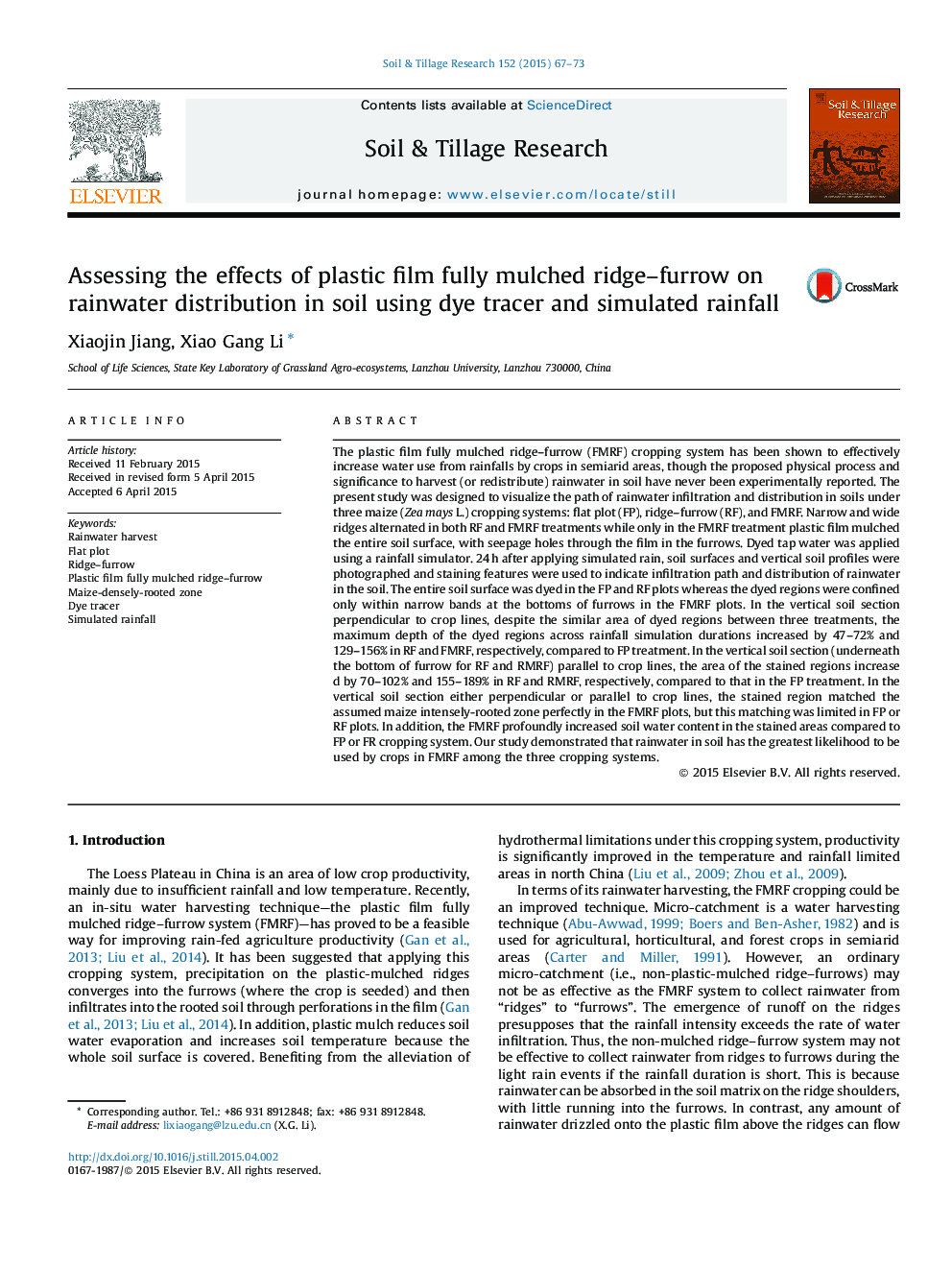| Article ID | Journal | Published Year | Pages | File Type |
|---|---|---|---|---|
| 305542 | Soil and Tillage Research | 2015 | 7 Pages |
•We assessed rainwater infiltration and distribution in soils under flat plot (FP), ridge–furrow (RF) and plastic film fully mulched ridge–furrow (FMRF) maize cropping systems.•Infiltration occurred across the entire soil surface in the FP and RF plots.•Infiltration was confined within the bottoms of furrows in the FMRF plots.•Infiltration depth was greater in FMRF than in FP and RF plots.•Rainwater distribution matched maize intensely-rooted zone perfectly in FMRF.
The plastic film fully mulched ridge–furrow (FMRF) cropping system has been shown to effectively increase water use from rainfalls by crops in semiarid areas, though the proposed physical process and significance to harvest (or redistribute) rainwater in soil have never been experimentally reported. The present study was designed to visualize the path of rainwater infiltration and distribution in soils under three maize (Zea mays L.) cropping systems: flat plot (FP), ridge–furrow (RF), and FMRF. Narrow and wide ridges alternated in both RF and FMRF treatments while only in the FMRF treatment plastic film mulched the entire soil surface, with seepage holes through the film in the furrows. Dyed tap water was applied using a rainfall simulator. 24 h after applying simulated rain, soil surfaces and vertical soil profiles were photographed and staining features were used to indicate infiltration path and distribution of rainwater in the soil. The entire soil surface was dyed in the FP and RF plots whereas the dyed regions were confined only within narrow bands at the bottoms of furrows in the FMRF plots. In the vertical soil section perpendicular to crop lines, despite the similar area of dyed regions between three treatments, the maximum depth of the dyed regions across rainfall simulation durations increased by 47–72% and 129–156% in RF and FMRF, respectively, compared to FP treatment. In the vertical soil section (underneath the bottom of furrow for RF and RMRF) parallel to crop lines, the area of the stained regions increased by 70–102% and 155–189% in RF and RMRF, respectively, compared to that in the FP treatment. In the vertical soil section either perpendicular or parallel to crop lines, the stained region matched the assumed maize intensely-rooted zone perfectly in the FMRF plots, but this matching was limited in FP or RF plots. In addition, the FMRF profoundly increased soil water content in the stained areas compared to FP or FR cropping system. Our study demonstrated that rainwater in soil has the greatest likelihood to be used by crops in FMRF among the three cropping systems.
